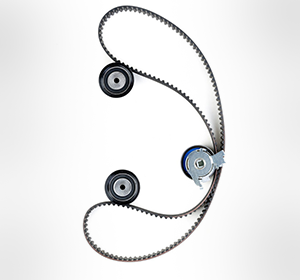
Have you had your timing belt checked?
The timing belt is an integral part of your engine and, if it fails, so does your engine, causing your car to shut down. You don't want to be driving at high-speed when the belt breaks or it can cause major safety issues.
How does a timing belt work?
The rubber timing belt is part of most internal combustion engines and is responsible for synchronizing the engine’s functions. In order for the engine components to take place the parts have to be in the right position at the right time. Unfortunately there are no obvious signs the timing belt is about to fail.
How much will it cost me to replace?
Typically it costs much less to replace the timing belt before it fails.
If your timing belt breaks while the engine is running or the vehicle is moving, it can do a lot more damage to the valves, water pump, or even the pistons.
Prevent further engine damage
Manufacturers recommend that you replace your timing belt every 60,000 to 100,000 miles.
Be sure to check your owner's manual for the manufacturer's recommendation.

